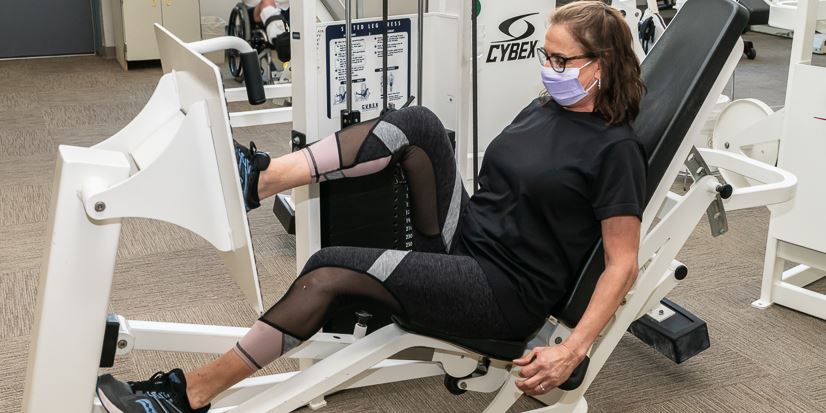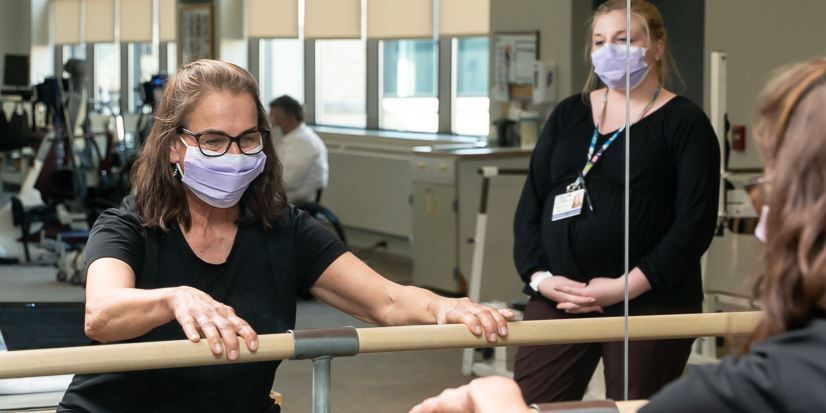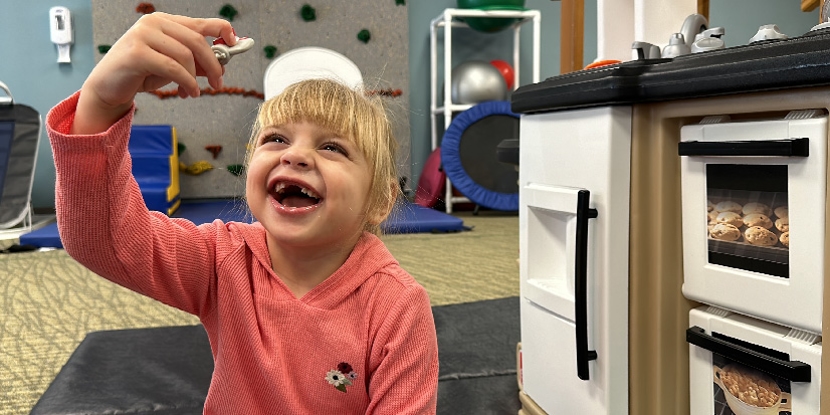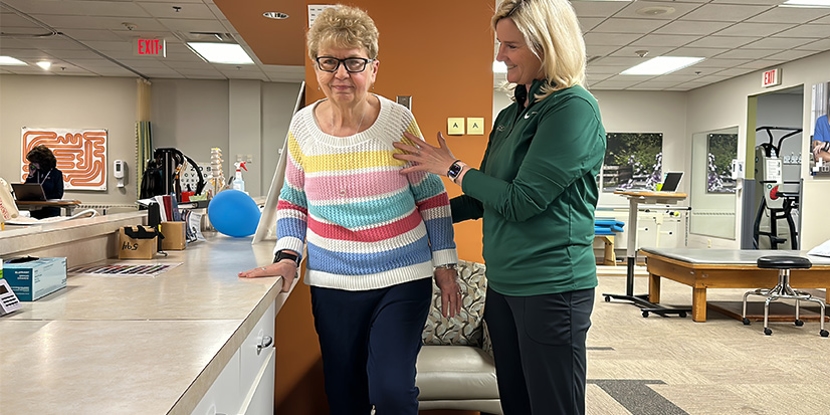Sue D.
- Author: Sue D.
- Date Submitted: Apr 13, 2022
- Category: Sports Medicine


In 2019, Sue D ran the TCS New York City Marathon. She was part of the charity team, Ryan’s Run, raising funds for Allied Services. A trip and fall during her training didn’t keep her from completing the 26.2 mile race. It did have lasting consequences for her mobility however.
On a late summer trip to Myrtle Beach, Sue decided to get a training run in on the beach.
“As I was going along, I stepped into a hole covered in ocean water. You know the kind kids usually dig on the beach. It was a pretty deep hole and I just went flying. I got up, brushed myself off, and thought oh my goodness what just happened.”
Sue was able to finish her run and get back to her hotel, but she was in pain. When she returned home after her vacation, she tried to run again. The pain was too much so she made an appointment at an orthopedic office. Thankfully the X-rays didn’t show any breaks but Sue was still in pain. She received physical therapy for a few weeks leading up to the marathon.

“When the marathon came, I started out ok, but at 6 miles I started to feel these stabbing pains in my hip and all I could think was NO. I’m not leaving this race.”
“I ran with my friend for a little while before I made her go ahead. I didn’t want to hold her back. After that, I stopped at each and every first-aid station along the way. They would help by putting some muscle cream on and trying some stretches. They kept asking me if I wanted to stop, but I was determined to finish.”
Sue completed the marathon. When she returned home she was sore but thought she would just give it a few weeks to rest.
“I figured I had just completed a marathon, it probably just needed time to heal. I gave it until about February and when I wasn’t any better - I called the doctor again.”
This time the doctor ordered an MRI that revealed Sue had several tears in the hip area and a gluteus medius tear that would need surgical repair.
The gluteus medius is a big muscle in the hip area that is essential for movement of the lower body. In fact, it’s the gluteus medius that helps flex, extend and rotate your hip for all sorts of movements and motions. The muscle starts around your hip bone and extends down to the top of your thigh bone, or femur. A gluteus medius tear happens when the muscle is torn away from this bone, either completely or partially.
Treatment can include surgical and non-surgical methods and the selection depends on the extent of the injury and the lifestyle of the patient. Because Sue suffered a significant tear of her gluteus medius muscle along with several other smaller tears, she required a surgical repair. Unfortunately, after her consultation with another specialist, it was revealed that Sue’s tear was too severe to be treated endoscopically and needed a traditional open surgery.
“At the time, it was early in the COVID pandemic and it was surging everywhere. I scheduled the surgery two times and canceled. I was teaching virtually, hospitals were filled, I just wasn’t comfortable. This whole time I hadn’t been running, so I just kind of let it go. Then recently I just decided, OK, I have to get back out there (running) so it’s time to get it fixed.”

The surgery was done via an outpatient procedure and Sue was able to return home that evening. Her surgeon ordered physical therapy to start right away. Sue chose Allied Services Luger Scranton Rehab Center where she worked with Stephanie Collins, PT, DPT.
“Sue is doing extremely well” says Stephanie. “She's been motivated since day 1 and I think being a marathoner has a lot to do with her drive to return to normal. She has that dedication and perseverance that is so important post-surgery. I saw her 2 days after her surgery and she was super excited the surgery was over and was anxious to begin the road to recovery.”
“Sue underwent a gluteus medius repair. That hip muscle is extremely important for stability when walking and especially while running. If you think about it, running is really all single limb support, so having that stability is crucial to support the runner's body weight. We've been staying within the guidelines of her surgeon's protocol while working on hip strength, core stabilization, and overall endurance and conditioning to prepare her to return to long-distance running.”
Recovery time can vary from a few months up to a year depending on the extent of your injury, activity level before your injury, and other factors. However, most people need about three months before their hip is fully functional again. The most important thing to remember during recovery is to follow the instructions provided to you by your surgeon.
“Stephanie is following the protocol exactly as my surgeon has it laid out - but she also tracks my progress really closely and touches base with him so I can keep moving forward. It’s nice to have someone keeping such a close watch on things.”
“There are weeks in between my surgical follow-ups, so he doesn’t get to see everything I am doing. If Stephanie sees I’m making good progress or wants to know if I can try something different - she reaches out and keeps my plan moving forward.”
“When I think back to where I started and how I feel now - I am definitely getting better. I want to get out there running again - but I know it’s going to take time.”
Treatment for Sports-Related Injuries
The Sports Medicine Program at Allied Services Integrated Health System provides comprehensive outpatient rehabilitation services to help individuals achieve maximum function following sports-related injury or surgery. Our specialized team of therapists looks at each patient with a unique and knowledgeable perspective to design the perfect plan of care. To find a sports medicine specialist near you call 570-348-1360 (Scranton) or 570-826-3900. Learn more here.



